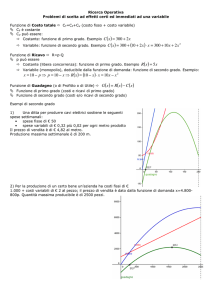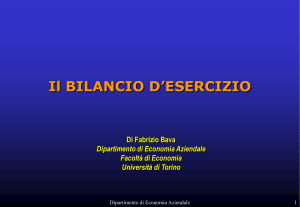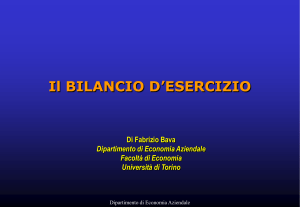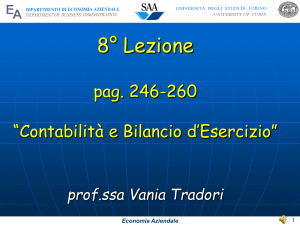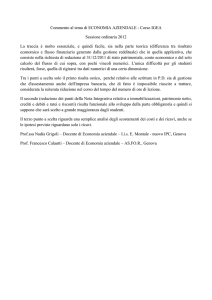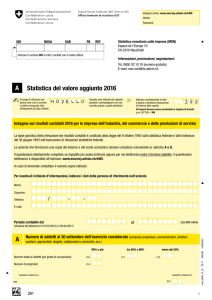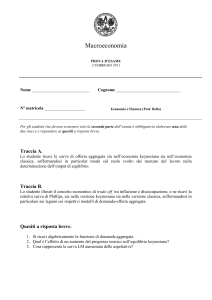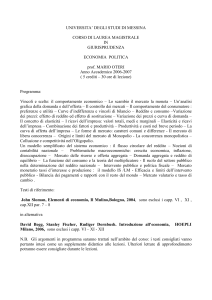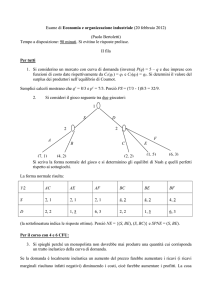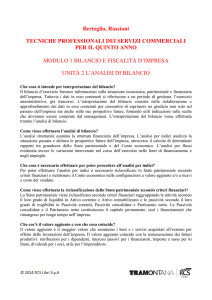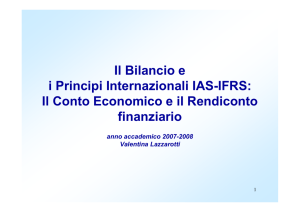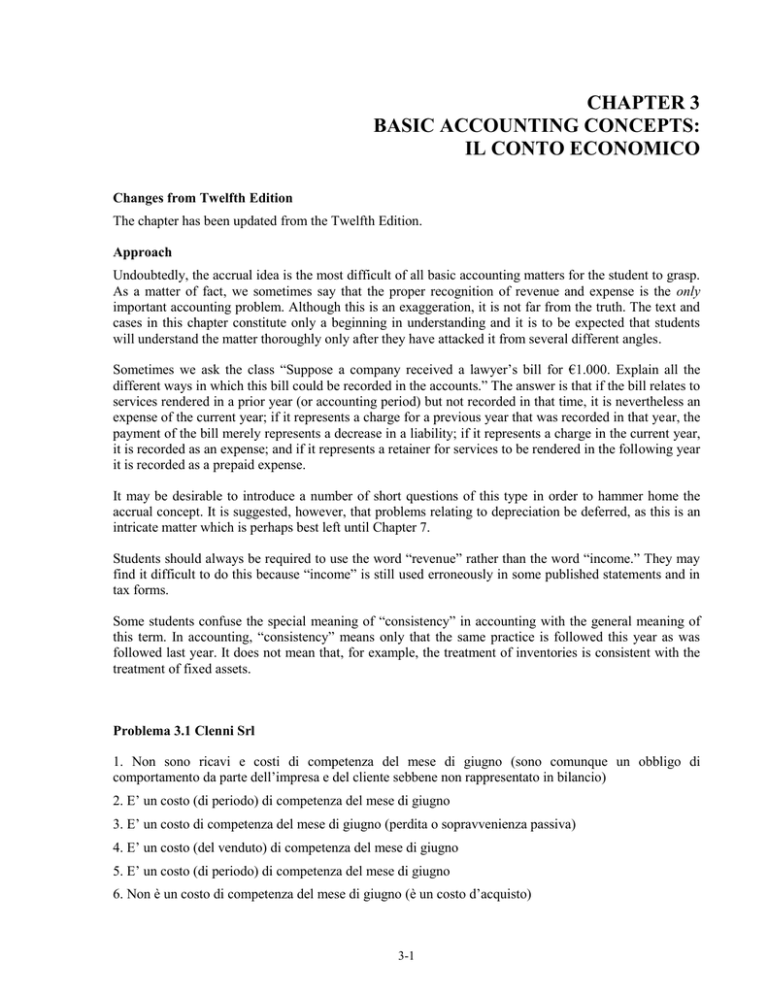
CHAPTER 3
BASIC ACCOUNTING CONCEPTS:
IL CONTO ECONOMICO
Changes from Twelfth Edition
The chapter has been updated from the Twelfth Edition.
Approach
Undoubtedly, the accrual idea is the most difficult of all basic accounting matters for the student to grasp.
As a matter of fact, we sometimes say that the proper recognition of revenue and expense is the only
important accounting problem. Although this is an exaggeration, it is not far from the truth. The text and
cases in this chapter constitute only a beginning in understanding and it is to be expected that students
will understand the matter thoroughly only after they have attacked it from several different angles.
Sometimes we ask the class “Suppose a company received a lawyer’s bill for €1.000. Explain all the
different ways in which this bill could be recorded in the accounts.” The answer is that if the bill relates to
services rendered in a prior year (or accounting period) but not recorded in that time, it is nevertheless an
expense of the current year; if it represents a charge for a previous year that was recorded in that year, the
payment of the bill merely represents a decrease in a liability; if it represents a charge in the current year,
it is recorded as an expense; and if it represents a retainer for services to be rendered in the following year
it is recorded as a prepaid expense.
It may be desirable to introduce a number of short questions of this type in order to hammer home the
accrual concept. It is suggested, however, that problems relating to depreciation be deferred, as this is an
intricate matter which is perhaps best left until Chapter 7.
Students should always be required to use the word “revenue” rather than the word “income.” They may
find it difficult to do this because “income” is still used erroneously in some published statements and in
tax forms.
Some students confuse the special meaning of “consistency” in accounting with the general meaning of
this term. In accounting, “consistency” means only that the same practice is followed this year as was
followed last year. It does not mean that, for example, the treatment of inventories is consistent with the
treatment of fixed assets.
Problema 3.1 Clenni Srl
1. Non sono ricavi e costi di competenza del mese di giugno (sono comunque un obbligo di
comportamento da parte dell’impresa e del cliente sebbene non rappresentato in bilancio)
2. E’ un costo (di periodo) di competenza del mese di giugno
3. E’ un costo di competenza del mese di giugno (perdita o sopravvenienza passiva)
4. E’ un costo (del venduto) di competenza del mese di giugno
5. E’ un costo (di periodo) di competenza del mese di giugno
6. Non è un costo di competenza del mese di giugno (è un costo d’acquisto)
3-1
Problema 3.2 Osmeri srl
€275.000
Ricavi
a. Costi di competenza:
Costo dei beni venduti ..............................................................................................................
€164.000
Affitto .......................................................................................................................................
3.300
Stipendi .....................................................................................................................................
27.400
Imposte e tasse ..........................................................................................................................
1.375
Altri costi ..................................................................................................................................
50.240
Utile netto
€28.685
Problema 3.3 Costo del venduto
Rimanenze iniziali (+) ......................................................................................................................................................................
€27.000
Acquisti ............................................................................................................................................................................................
78.000
Beni disponibili per la vendita .......................................................................................................................................................
105.000
Rimanenze finali (-) ..........................................................................................................................................................................
(€31.000)
Costo del venduto ...........................................................................................................................................................................
€74.000
Problema 3.4 Vordeni Srl
a. (1)
Ricavi ...............................................................................................................................................................................
€85.000
Costo dei beni venduti .....................................................................................................................................................
45.000
Margine lordo.................................................................................................................................................................
€40.000
(2) Margine lordo percentuale:
47,0% (€40.000 / €85.000)
(3) Utile netto percentuale:
10,6% (9.000/85.000)
Vordeni paga il 40% di imposte (€6.000/€15.000) sul reddito ante imposte che rappresenta il 17,7% dei
ricavi (€15.000/€85.000). I costi operativi totali (imposte escluse) sono dunque l’82,3% dei Ricavi
(€70.000/€85.000) e il Costo dei beni venduti rappresenta il 53% dei ricavi. Il Margine lordo dell’impresa
è, conseguentemente, il 47% dei Ricavi (€40.000 / €85.000).
Problema 3.5 Costi di competenza
Ciascun anno, per cinque anni, l’ammortamento di €8.000 è un costo di competenza presente in
conto economico.
Il terreno non si ammortizza (è un bene che non perde la sua “funzionalità”) e quindi nessun costo
di competenza è collegato.
Il costo dei beni venduti (€3.500 = 7000/2) è di competenza dell’esercizio corrente.
€36 di iscrizione a un periodico sono di competenza dell’esercizio e €36 di quello prossimo.
3-2
Problema 3.6 Piersoni computer
Il costo mensile della polizza è €1.250 (€30. 000 / 24 mesi)
Costo di competenza:
2013 € 3.750 (€1250 x 3 mesi)
2014 € 15.000 (€1250 x 12 mesi)
2015 € 11.250 (€1250 x 9 mesi)
Valore dell’attività (costo anticipato):
1° Ottobre 2013
€30.000
31 Dicembre 2013
26.250 (30.000 -3.750)
31 Dicembre 2014
11.250 (26.250 -15.000)
31 Dicembre 2015
0 (11.250- 11.250)
Problema 3.7 Valori finali
Attività
Passività
Attività correnti
(€50.000 x 1,6) ....................................................................................................................................................................
€ 80.000
Passività correnti .................................................................................
€ 50.000
Altre attività
Debiti a lungo termine
40.000
(€218.182 - €80.000) ...........................................................................................................................................................
138.182
Totale Passività ..................................................................................
€ 90.000
Capitale netto:
Valore iniziale CN...............................................................................
€120.000
Più: Reddito netto ................................................................................
8.182 (*)
Valore finale CN .................................................................................
€128.182
Totale Attività .......................................................................................................................................................
€218.182+
Totale Passività e CN ........................................................................
€218.182
+
Totale Attività = Totale Passività + Capitale netto.
(*) Ricavi – costo del venduto = margine lordo
Costo del venduto = RI + Acquisti – RF = 35.000+40.000-30.000 = €45.000
Ricavi - 45.000 = Ricavi x 0,45 da cui Ricavi = €81.820
Reddito netto = 10% dei Ricavi = €8.182
3-3

